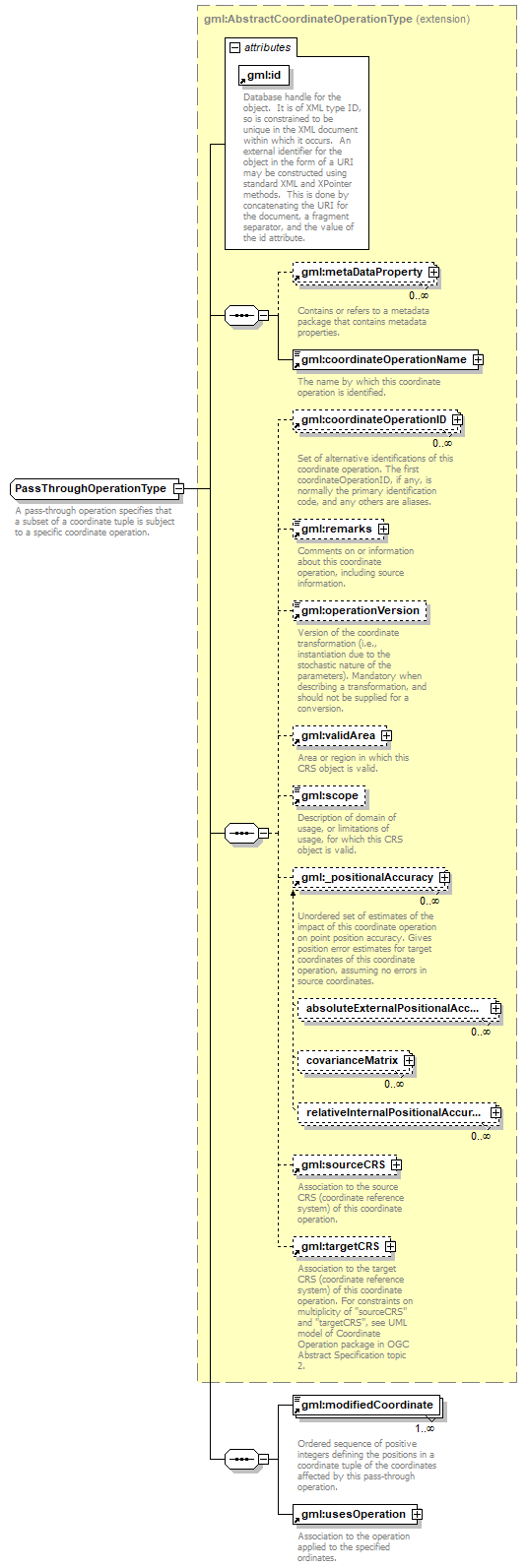| diagram |  |
||||||||||||||
| namespace | http://www.opengis.net/gml | ||||||||||||||
| type | extension of gml:AbstractCoordinateOperationType | ||||||||||||||
| properties |
|
||||||||||||||
| children | gml:metaDataProperty gml:coordinateOperationName gml:coordinateOperationID gml:remarks gml:operationVersion gml:validArea gml:scope gml:_positionalAccuracy gml:sourceCRS gml:targetCRS gml:modifiedCoordinate gml:usesOperation | ||||||||||||||
| used by |
|
||||||||||||||
| attributes |
|
||||||||||||||
| annotation |
|
||||||||||||||
| source | <xs:complexType name="PassThroughOperationType"> <xs:annotation> <xs:documentation>A pass-through operation specifies that a subset of a coordinate tuple is subject to a specific coordinate operation. </xs:documentation> </xs:annotation> <xs:complexContent> <xs:extension base="gml:AbstractCoordinateOperationType"> <xs:sequence> <xs:element ref="gml:modifiedCoordinate" maxOccurs="unbounded"> <xs:annotation> <xs:documentation>Ordered sequence of positive integers defining the positions in a coordinate tuple of the coordinates affected by this pass-through operation. </xs:documentation> </xs:annotation> </xs:element> <xs:element ref="gml:usesOperation"/> </xs:sequence> </xs:extension> </xs:complexContent> </xs:complexType> |
XML Schema documentation generated by XMLSpy Schema Editor http://www.altova.com/xmlspy